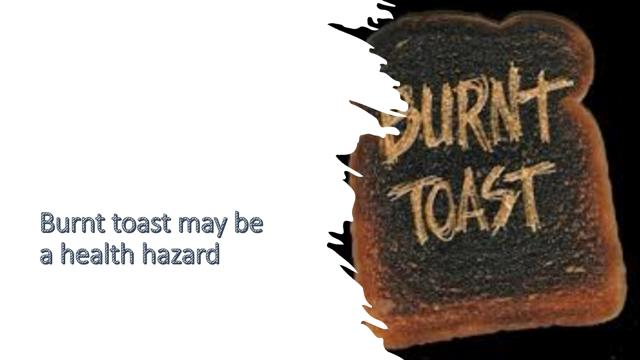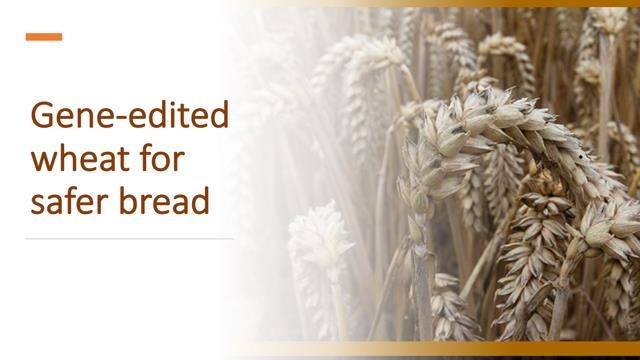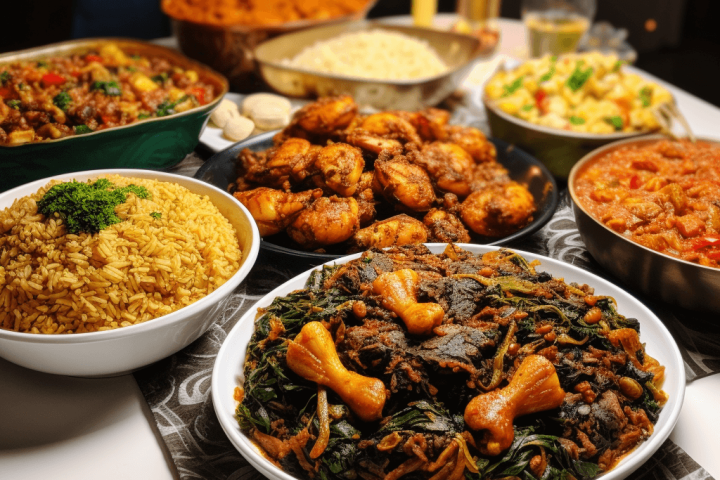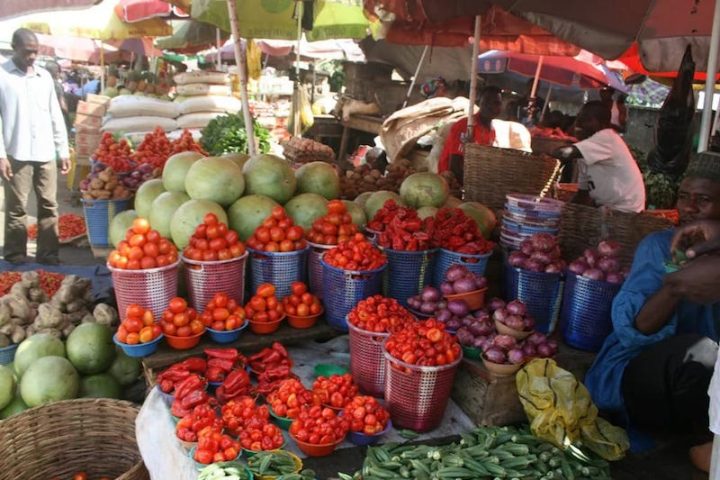Let’s talk about the humble bread. Bread since the dawn of times has been the main staple food for man. It featured prominently in the Bible, the famous one being the feeding of the five thousand by Jesus with only five loaves of BREAD and two fishes! The simple ingredients for bread are just flour (from wheat) and water. It can be eaten as leavened or unleavened (read your Bible). Leavened bread simply means blowing gas bubbles through the bread to lighten and soften it. This is done either by using yeast, chemicals or high-pressure aeration. The gas produced in this process is usually carbon dioxide and at times hydrogen. The modern way of preparing bread is by using additives (e.g. sugar, ascorbic acid i.e. vitamin C, etc.), to improve the flavour, appearance, shelf life and nutritional quality.
Bread when toasted, often contains low levels of acrylamide, which increases in levels when heat is applied for far too long. Acrylamide is formed in bread (or in starchy foods) by the conversion of a naturally occurring amino acid called asparagine to the cancer-causing agent acrylamide when bread is toasted, baked or fried above 120° C for a long period of time (this also applies to fried or roasted foods such as chips, crisps and roasted potatoes).
Join our WhatsApp ChannelThe process in simple terms requires the presence of reducing sugar (e.g. glucose, maltose, fructose, etc., from your starch food) and a free asparagine. However, the level of acrylamide formed by this process is still very low as to pose a health risk unless you are going to munch your way through a bucketful of bread! Cancer Research UK, a UK funding body, has been on record to affirm that “Eating burnt food does not cause cancer.” However, acrylamide is a neurotoxin (affects the nervous system) and has been implicated to cause cancer in murine (rats, mice, etc.) and by implication, a strong carcinogenic suspect in humans.
The use of CRISPR (Clustered Regularly Interspaced Short Palindromic Repeats), as a tool in genome-editing is becoming popular amongst scientists due to the specificity of the technology. It leaves no noticeable mark on the genome except for the required alteration. In effect, there is no evidence to distinguish such a change from naturally occurring ones.
Scientists at Rothamsted Research in Harpenden, UK, writing in the Farmers Weekly, reported to have used the genome-editing tool, CRISPR to reduce the level of asparagine contained in wheat by simply deleting a gene called asparagine-synthetase or TaASN2. This gene is responsible for asparagine synthesis in wheat.
This means that the new wheat plants will produce less asparagine than the wild-type (original wheat plant). The purpose of the research was to create a wheat plant in which flour made from it, will be used to produce bread that contains less acrylamide when toasted than the current bread. By this process, consumer exposure to acrylamide is reduced without any compromise on food quality.
 But opponents to GM crops argue that asparagine levels in wheat can also be reduced by doing away with intensive farming practice and the associated growing conditions and environmental stresses such a practice generates. In fact, a paper published in 2003 in the Journal of Agricultural and Food Chemistry did conclude that the “acrylamide contents in potato products can be substantially reduced primarily by selecting cultivars with low concentrations of reducing sugars.”
But opponents to GM crops argue that asparagine levels in wheat can also be reduced by doing away with intensive farming practice and the associated growing conditions and environmental stresses such a practice generates. In fact, a paper published in 2003 in the Journal of Agricultural and Food Chemistry did conclude that the “acrylamide contents in potato products can be substantially reduced primarily by selecting cultivars with low concentrations of reducing sugars.”
The research at Rothamsted has given rise to a lot of divergent opinions amongst scientists and the general public. The question is, should this research be classified as wheat genome modification, and if so, is the new wheat plant a genetically modified (GM) wheat or simply a genome-engineered (GE) wheat?
To answer that question, let’s look at what the European Union (EU) says about GM: a GM-modified plant means the insertion of foreign gene/s in such plant and more often than not without control over where such gene/s is inserted in the genome. The EU banned GM technology essentially because of this lack of control on where the foreign genes are inserted in the genome as the consequences of any such insertion is not known. Moreover, the EU is mindful of consumer apathy and hostility towards
GM crops especially when it comes to the issues of GM safety and impact on the environment.
On the other hand, most scientists argue that the use of CRISPR technology is much specific and efficient, and gives rise to the type of changes expected to happen naturally with time, anyway. Therefore there should be a distinction between GM crops in which foreign genes are inserted in the genome, and GE crops produced by simply deleting the gene of interest without introducing any other foreign gene/s into the genome.
The UK looking to assert her independence from the EU following Brexit is aligning her views to those of the scientists. In this regard, the UK government is proposing a deregulatory mechanism of gene-editing technology if the result of such technology is the same as conventional breeding. To buttress this position, it has given permission for the CRISPR-generated wheat plants to be trialled at Hertfordshire this autumn, thus making it the first of any such field trials of GE-wheat anywhere in Europe.
It must be pointed out that the UK is not alone in pushing for GM crops as part of the solution to food security. Other countries are doing the same, notably, Argentina, Brazil, Japan and the USA. They are categorising GM products on the basis of the genetic modifications involved, which in turn informed on the requirements for tailored regulatory updates.
It does look like the controversy on the use of CRISPR to tweak changes in crops will not die away anytime soon, especially as the public cannot tell the difference between GE crops and GM. Herein lies the need for governments to educate their public on such subtle differences using data generated by in-depth evaluations of safety issues and the environmental impact, if any, of using genome-editing technology in the agricultural sector.

















So insightful. Talking about bread like this just uncommon.. I learnt a lot.